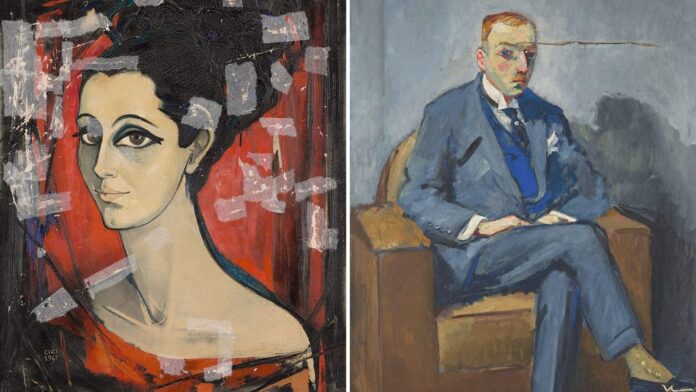When the deadly Beirut Port explosions occurred on 4 August 2020, the international art community joined forces to help revive the Lebanese capital’s cultural scene.
Among them was the Centre Pompidou in Paris, which has now unveiled three damaged paintings it has restored from the collection of the Sursock Museum in Beirut.

The Portrait of Nicolas Sursock (1926-30) by Kees Van Dongen with a large tear © Photo by Rowina Bou Harb
“My first reaction was shock,” the museum’s director Karina El Helou says about the damage to the works. “We had a conservation plan and all those years of hard work disappeared in one second.”
After a two-and-a-half year restoration period, the pieces are currently on view at the Pompidou until their return to Lebanon for the museum’s reopening in May. The display also signifies “historical links and friendship between Lebanon and France,” the director says.
The paintings are by notable artists of the 20th century: the Dutch-French artist Kees van Dongen, the Croatian-Lebanese artist Cici Tommaseo Sursock, and Paul Guiragossian, who was Lebanese-Armenian. “Each artwork had its own challenge,” El Helou says.
Van Dongen’s portrait depicts the Lebanese art collector and museum founder, Nicolas Ibrahim Sursock, who met the artist during a visit to Lebanon. The painting, which required stitching on its verso, had a large tear across the forehead of the sitter.

A restorer working on the Portrait of Nicolas Sursock (around 1926-30) by Kees Van Dongen © Photo by Rowina Bou Harb
Cici Tommaseo Sursock’s 1967 red-toned image, which endured several tears all over the canvas, is a portrait of the Lebanese artist and patron, Odile Mazloum. The painting was on loan to the museum and will be returned to the sitter. According to El Helou, one of the trickiest aspects of its restoration was choosing the right tone of red.
Guiragossian’s work titled Consolation was the hardest picture to fix as the explosion resulted in some of its pieces to fall off. Executed with thick brushstrokes, it has not been fully reconstructed—in part, to remind viewers of the horror that happened.

























